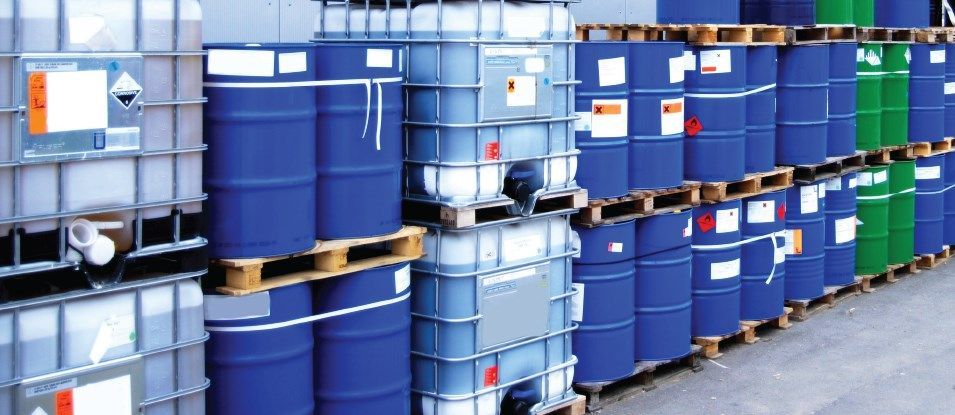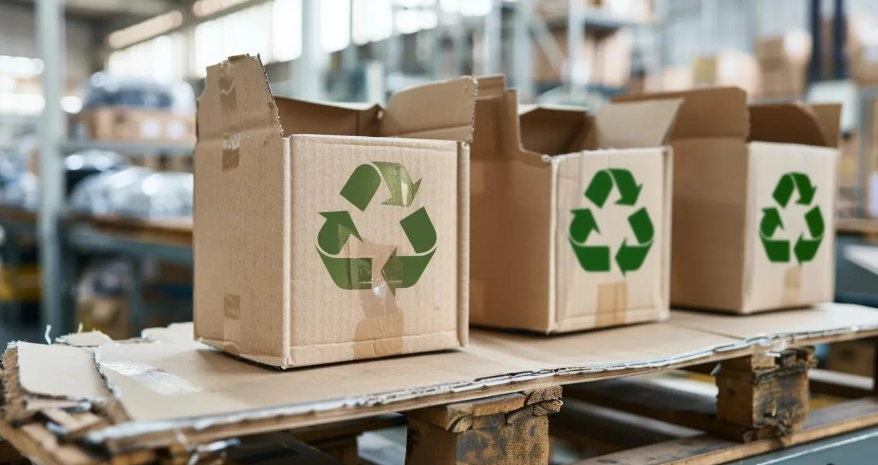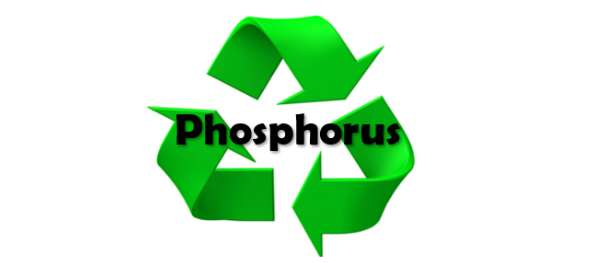Chemical Safety in the Supply Chain: Best Practices from Factory to End-User
In 2024, the global chemical industry was valued at over $6 trillion, with millions of chemical shipments crossing borders daily. Yet behind these staggering numbers lies a critical responsibility: ensuring that every chemical product reaches its destination safely, protecting workers, consumers, and the environment at every step. From manufacturing facilities to warehouse shelves to end-users, chemical safety is not just a regulatory requirement - it's a fundamental obligation that requires vigilance, expertise, and commitment from every stakeholder in the supply chain.
Understanding the Chemical Supply Chain
The chemical supply chain is a complex network involving manufacturers, distributors, transporters, warehouses, retailers, and end-users. Each transition point represents both an opportunity to maintain safety standards and a potential vulnerability where risks can emerge. Whether it's industrial solvents, cleaning products, pharmaceuticals, or agricultural chemicals, each substance requires specific handling protocols based on its hazard profile.
The regulatory landscape governing this industry is equally complex. In the United States, the Occupational Safety and Health Administration (OSHA) sets workplace safety standards, while the Environmental Protection Agency (EPA) regulates environmental impacts. Internationally, systems such as the Globally Harmonized System of Classification and Labeling of Chemicals (GHS) and the European Union's REACH regulation establish frameworks for the safe management of chemicals. Companies dedicated to chemical safety, such as DECACHEM, understand that compliance with these varied regulations is just the baseline - true safety requires going beyond minimum requirements to build robust systems at every stage.
Manufacturing: Where Safety Begins
Chemical safety starts at the source. Manufacturing facilities must implement comprehensive safety protocols that protect workers while ensuring product integrity. This begins with proper storage systems that account for chemical compatibility, keeping oxidizers away from flammables, acids separated from bases, and reactive substances properly isolated.
Modern manufacturing facilities employ multiple layers of protection. Engineering controls like ventilation systems, containment areas, and automated handling equipment minimize human exposure to hazardous substances. Administrative controls, including standard operating procedures and regular safety audits, create a framework for consistent safe practices. Personal protective equipment (PPE) serves as the final line of defense, with manufacturers providing appropriate respirators, gloves, goggles, and protective clothing based on specific chemical hazards.
Documentation at the manufacturing stage is critical. Accurate Safety Data Sheets (SDS) must be created for every chemical product, providing detailed information about hazards, handling requirements, emergency measures, and disposal methods. Proper labeling according to GHS standards ensures that hazard information travels with the product throughout its journey. Companies like Decachem recognize that these documents are not mere paperwork - they're essential communication tools that can prevent accidents and save lives.
Transportation: Managing Mobile Risk
Once chemicals leave the manufacturing facility, they enter perhaps the most dynamic and challenging phase of the supply chain: transportation. Moving hazardous materials by truck, rail, ship, or air requires specialized knowledge and strict adherence to Department of Transportation (DOT) regulations.
Packaging is the first critical consideration. DOT-compliant containers must be designed to withstand the stresses of transportation, including vibration, temperature changes, and potential impacts. For highly hazardous materials, secondary containment provides an extra layer of protection against leaks or spills. Temperature-sensitive chemicals may require refrigerated transport, while pressure-sensitive materials need containers that can safely manage internal pressure changes.
Driver training is equally important. Those transporting hazardous materials must be certified and trained in emergency response procedures. They must understand placarding requirements, know how to use shipping papers correctly, and be prepared to respond appropriately if an incident occurs. Route planning takes on new significance when hazardous materials are involved, with considerations for avoiding densely populated areas, having emergency response capabilities along the route, and complying with restrictions on certain roads or tunnels.

Warehousing: The Critical Middle Ground
Distribution centers and warehouses serve as crucial nodes in the chemical supply chain, where products may be stored temporarily or for extended periods. These facilities face unique challenges in managing diverse chemical inventories safely.
Chemical segregation is paramount in warehouse settings. Incompatible materials must be stored separately to prevent dangerous reactions in case of leaks or spills. This requires not just physical separation but also careful inventory management systems that prevent incompatible chemicals from being placed near each other during receiving or picking operations.
Proper ventilation, temperature control, and humidity management protect both workers and chemical integrity. Spill containment systems, including berms, containment pallets, and absorbent materials, must be strategically positioned throughout the facility. Emergency equipment—including eyewash stations, safety showers, fire suppression systems, and spill kits—should be readily accessible and regularly inspected.
Regular training ensures that all personnel understand the hazards they may encounter and know how to respond to emergencies. Clear signage, well-marked emergency exits, and practiced evacuation procedures create an environment where safety is embedded in daily operations.
Retail and End-User Distribution
When chemicals reach retail environments or are prepared for delivery to end-users, safety considerations shift but remain critically important. Retail stores selling chemical products must balance accessibility with safety, ensuring products are properly displayed, clearly labeled, and protected from tampering or unauthorized access.
Customer education becomes crucial at this stage. Clear usage instructions, prominent warning labels, and availability of SDS information help end-users understand how to safely handle, use, and store products. For certain products, age restrictions and purchase limitations serve as additional safety measures.
The final delivery to end-users - whether industrial customers, commercial operations, or residential consumers - requires verification that packaging remains intact and that appropriate safety information accompanies the product. This is where the supply chain's safety efforts either succeed or fail, as proper communication and documentation ensure that end-users have the knowledge they need to use chemicals safely.
Technology: The Future of Chemical Safety
Innovation is transforming chemical supply chain safety. Digital tracking systems, including blockchain technology, create immutable records of a chemical's journey from manufacturer to end-user, improving traceability and accountability. Internet of Things (IoT) sensors can monitor storage conditions in real-time, alerting managers to temperature excursions, humidity problems, or potential leaks before they become serious issues.
Artificial intelligence and machine learning are being deployed to predict potential safety risks by analyzing patterns in incident reports, near-misses, and operational data. Mobile applications provide instant access to SDS information, allowing workers anywhere in the supply chain to quickly reference safety data when needed. Automated compliance checking systems help ensure that shipments meet all applicable regulations before they leave facilities.
These technological advances don't replace human judgment and expertise - they enhance it. Companies committed to chemical safety, like DECACHEM, recognize that technology is most effective when integrated into a comprehensive safety culture that values continuous improvement and learning.
Building a Culture of Safety
Technology and procedures are essential, but sustainable chemical safety ultimately depends on culture. Every person in the supply chain, from production workers to truck drivers to warehouse staff to retail employees, must understand their role in maintaining safety and feel empowered to speak up when they see risks.
This requires ongoing investment in training and education. Initial certification is just the beginning; regular refresher courses, updates on new regulations and best practices, and scenario-based training keep safety knowledge current and applicable. Incident reporting systems that focus on learning rather than blame encourage workers to report near-misses and potential hazards, creating opportunities for prevention.
Communication across the supply chain is equally vital. When manufacturers, transporters, distributors, and end-users share information openly about hazards, incidents, and best practices, everyone benefits. Industry associations, safety conferences, and collaborative partnerships create forums for this knowledge sharing, raising safety standards across the entire sector.
The Path Forward
Chemical safety in the supply chain is not a destination but a journey of continuous improvement. Regulations will continue to evolve, new chemicals will be developed, and supply chains will become more complex and global. Success requires commitment from every stakeholder to prioritize safety alongside efficiency and profitability.
The most effective approach combines robust procedures, appropriate technology, ongoing training, and a genuine culture that values safety above all else.
As we look to the future, the chemical industry faces both challenges and opportunities. By embracing best practices at every stage from factory to end-user, investing in safety innovations, and fostering collaboration across the supply chain, we can ensure that the chemicals that improve our lives reach us safely and responsibly. The responsibility is shared, but the goal is universal: protecting people and the environment while maintaining the flow of essential chemical products that modern society depends upon.
Every shipment, every storage decision, every training session is an opportunity to reinforce safety. In the chemical supply chain, there are no small details, only critical responsibilities that, when fulfilled diligently, create a safer world for everyone.
















